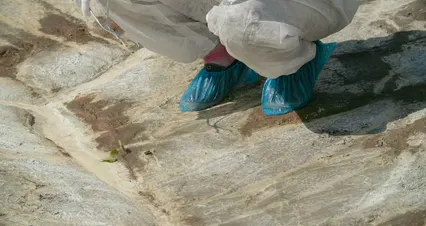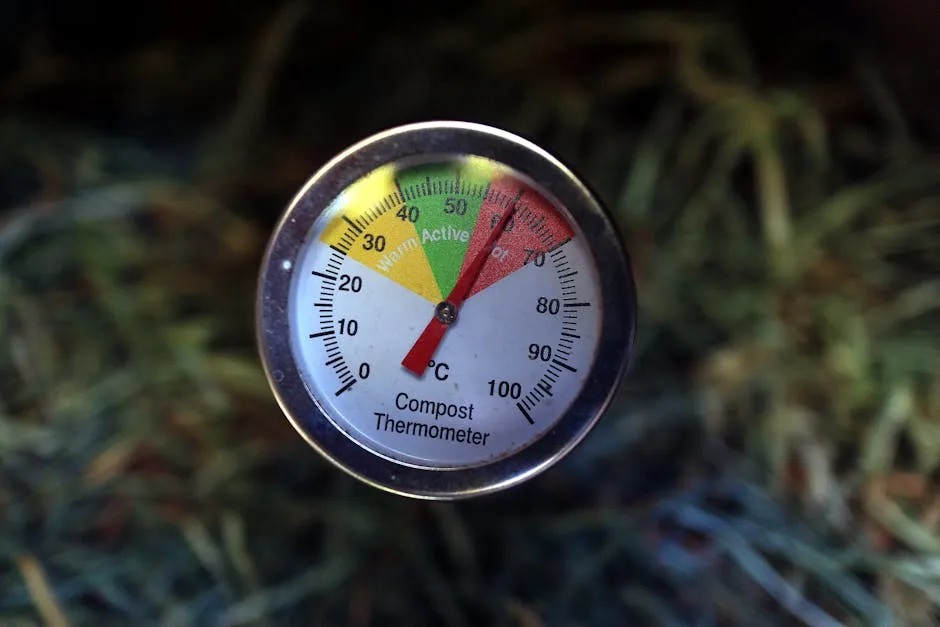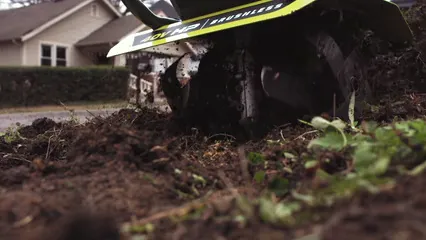

How to Improve Soil Nutrients for Successful Plant Transplanting
Introduction
Soil nutrients play a vital role in plant health. They support growth and development, especially during transplanting. Nutrient-rich soil leads to thriving plants and higher yields.
Speaking of nutrient-rich soil, have you ever tried using a Soil Test Kit? It’s like a magic wand for your garden, giving you insights into what your soil is really made of. Knowing your soil’s nutrient levels can help you avoid the dreaded transplant shock.
Summary
Preparing the soil before transplanting is crucial. Poor soil conditions can result in transplant shock and unhealthy plants. Nutrient deficiencies hinder root growth and overall vigor. To improve soil nutrients, consider testing, amending, and maintaining soil health.

Start by conducting a soil test to determine nutrient levels. Amend the soil with organic matter like compost, which enhances fertility and structure. Regularly monitor soil conditions to ensure ongoing health. If you’re looking for top-notch Organic Compost, it’s a game changer for your garden’s nutrient profile!
Key nutrients for optimal plant growth include nitrogen, phosphorus, and potassium. These macronutrients are essential for strong root systems and healthy foliage. Organic matter also provides micronutrients and improves moisture retention. By focusing on these practices, you can create a robust environment for successful transplanting.
To enhance your understanding of compost’s role in soil health, check out this Guide to composting in small backyard spaces.

Preparing the Soil for Transplanting
Importance of Soil Nutrients
Soil nutrients are the lifeblood of plants. They support growth and development, especially during transplanting. Without the right nutrients, plants struggle to establish themselves and thrive. Healthy soil rich in nutrients promotes strong root systems, which are essential for water and nutrient absorption.
Macronutrients like nitrogen (N), phosphorus (P), and potassium (K) play a pivotal role in plant health. Nitrogen boosts leafy growth, phosphorus supports root development and flowering, while potassium enhances overall vigor. When these nutrients are absent, plants can experience deficiencies, leading to stunted growth and transplant failure.
Soil structure also matters. Well-aerated soil allows roots to penetrate easily, ensuring they access moisture and nutrients effectively. In fact, nutrient-rich soil can improve plant growth by over 30%. To set your plants up for success, assess your soil nutrient levels before transplanting.

Make it a priority to provide your plants the nutrients they need for a healthy start. This will not only improve transplant success but also enhance plant health and productivity in the long run. If you’re looking for a trusty Garden Fork, this tool will help you mix in those nutrients like a pro!
Conducting Soil Tests
How to Test Soil Nutrients
Understanding your soil’s nutrient levels is crucial for successful gardening. Start by testing the soil. You can use DIY kits available at garden centers or send samples to a lab for detailed analysis. Both methods provide insights into nutrient composition and pH levels.
Follow these steps for a thorough soil test. First, collect samples from various spots in your garden. Mix them in a clean bucket to get a representative sample. Next, follow the instructions on your test kit or lab submission. Pay attention to the recommended depth for sampling—usually 8-12 inches.

Once you receive your results, interpret them carefully. Look for nutrient deficiencies and pH imbalances. Common deficiencies include nitrogen, phosphorus, and potassium. Knowing these will help you adjust soil amendments accordingly.
For example, if nitrogen is low, consider adding organic fertilizers or compost. If the pH is too high, you might need to apply sulfur. Regular soil testing ensures your plants get the nutrients they need. So, make it a habit. Conduct a soil test before you start planting for successful growth!
Amending the Soil
Adding Organic Matter
Adding organic matter boosts soil nutrients significantly. Compost, well-rotted manure, and mulch are excellent choices. These materials not only enrich the soil but also enhance its structure. As organic matter decomposes, it releases essential nutrients, ensuring plants thrive.

Compost improves moisture retention, allowing soil to hold water better. Studies show that organic matter can increase water retention by up to 30%. This is crucial for young transplants, as they need consistent moisture to establish roots. If you’re ready to get serious about composting, a Compost Bin is a must-have!
Microbial activity thrives in organic-rich soil. Healthy microbes break down nutrients, making them available to plants. They also help improve soil aeration, promoting root growth. For best results, aim for a ratio of about 25% organic matter to your soil. Incorporating this into your garden will create a vibrant ecosystem that supports plant health.

For more insights on improving soil health through compost, check out composting basics for improving soil health.
Nutrient Management
Choosing the Right Fertilizers
Selecting the right fertilizers is key for successful transplanting. You have two main options: organic and synthetic fertilizers. Organic fertilizers, like bone meal and fish emulsion, release nutrients slowly. They improve soil health over time.
On the other hand, synthetic fertilizers provide immediate nutrient boosts. However, they may lead to nutrient runoff if overused. It’s essential to match fertilizers to your plants’ specific needs. Look for balanced N-P-K ratios, which represent nitrogen, phosphorus, and potassium.

Different plants require different N-P-K ratios. For example, leafy greens thrive with higher nitrogen, while flowering plants need more phosphorus. Timing is also critical. Apply fertilizers just before or during transplanting to ensure nutrients are readily available. If you’re looking for an easy way to fertilize, try Plant Fertilizer Spikes for a hassle-free solution!
To explore the best organic fertilizers for vegetable gardens, visit Best organic fertilizers for vegetable gardens in small spaces.
Enhancing Soil Structure
Improving Drainage and Aeration
Soil structure is vital for plant health. Proper drainage and aeration promote root growth and nutrient uptake. Compacted soil can restrict roots, making it hard for plants to thrive.
To loosen compacted soil, try using a Tiller or a garden fork. This technique breaks up dense layers, allowing air and water to penetrate. Adding materials like sand, perlite, or vermiculite can significantly improve drainage. These amendments create air pockets in the soil, enhancing aeration.

Mulching is another effective strategy. A layer of organic mulch helps retain moisture while regulating soil temperature. This prevents the soil from drying out and protects roots from extreme temperatures. If you want to keep things neat, consider using Organic Mulch that’s not only good for your plants but also for the environment!
Well-aerated soil can boost root development significantly. Studies show that roots can grow up to 30% faster in well-drained conditions. So, take a moment to assess your soil texture. If it’s compacted or poorly drained, consider these methods to improve its structure. Your plants will thank you!

Best Practices for Successful Transplanting
Timing and Techniques
Timing is crucial for successful transplanting. Each plant type has its ideal transplanting window. Generally, early morning or late afternoon is best, as temperatures are cooler.
Before transplanting, prepare your plants. Water them well a day before to reduce stress. When removing from containers, gently loosen the root ball. This encourages roots to spread in their new home.

Plant at the correct depth. Most plants prefer the same depth they grew previously. Avoid burying the stem, as this can lead to rot. After planting, water generously to settle the soil around the roots. To keep track of your plants, consider using Plant Labels to avoid the dreaded “what did I plant here?” mystery.
Mulching post-transplanting is essential. A layer of mulch retains moisture and suppresses weeds. It also regulates temperature, giving plants a stable environment.
Studies suggest that proper timing and techniques can increase transplant success rates by up to 50%. So, follow these best practices to ensure healthy, thriving plants!

Conclusion
In this article, we covered essential practices for improving soil nutrients before transplanting. Healthy, nutrient-rich soil is vital for successful plant establishment. We discussed testing your soil, adding organic matter, and choosing the right fertilizers. Each step ensures your plants receive the nutrients they need to thrive. If you’re interested in a comprehensive read, check out Gardening Book: “The Vegetable Gardener’s Bible” for in-depth insights!

Proper soil nutrient management not only aids in transplant success but also supports ongoing plant health. It’s important to monitor soil conditions regularly. By maintaining soil health, you’ll create a thriving environment for your plants to flourish. Happy gardening!
FAQs
What nutrients are essential for plant growth during transplanting?
Essential nutrients include nitrogen, phosphorus, and potassium, often referred to as N-P-K. Nitrogen promotes leafy growth, phosphorus supports strong root systems, and potassium enhances overall plant health. Ensuring these nutrients are present in your soil can lead to healthier, more resilient plants.
How can I tell if my soil is nutrient deficient?
Signs of nutrient deficiency include yellowing leaves, stunted growth, and poor fruit development. You can perform soil tests using DIY kits or send samples to a lab. These tests will reveal nutrient levels and pH, helping you identify any deficiencies.
What is the best time to transplant my plants?
The ideal transplanting time varies by plant type. Generally, transplant in early morning or late afternoon to avoid heat stress. For many plants, spring and fall are the best seasons, as temperatures are milder and conditions more favorable for root establishment.
Can I use synthetic fertilizers when transplanting?
Yes, but weigh the pros and cons. Synthetic fertilizers provide immediate nutrient boosts but can harm soil health over time. Organic fertilizers, while slower to act, enhance soil structure and microbial activity. Balancing both can yield the best results.
How often should I amend my soil with organic matter?
Amend your soil with organic matter annually or at the beginning of each planting cycle. This practice enhances soil structure, fertility, and moisture retention. Regular amendments ensure your soil remains nutrient-rich and supports healthy plant growth.
Please let us know what you think about our content by leaving a comment down below!
Thank you for reading till here 🙂
All images from Pexels



